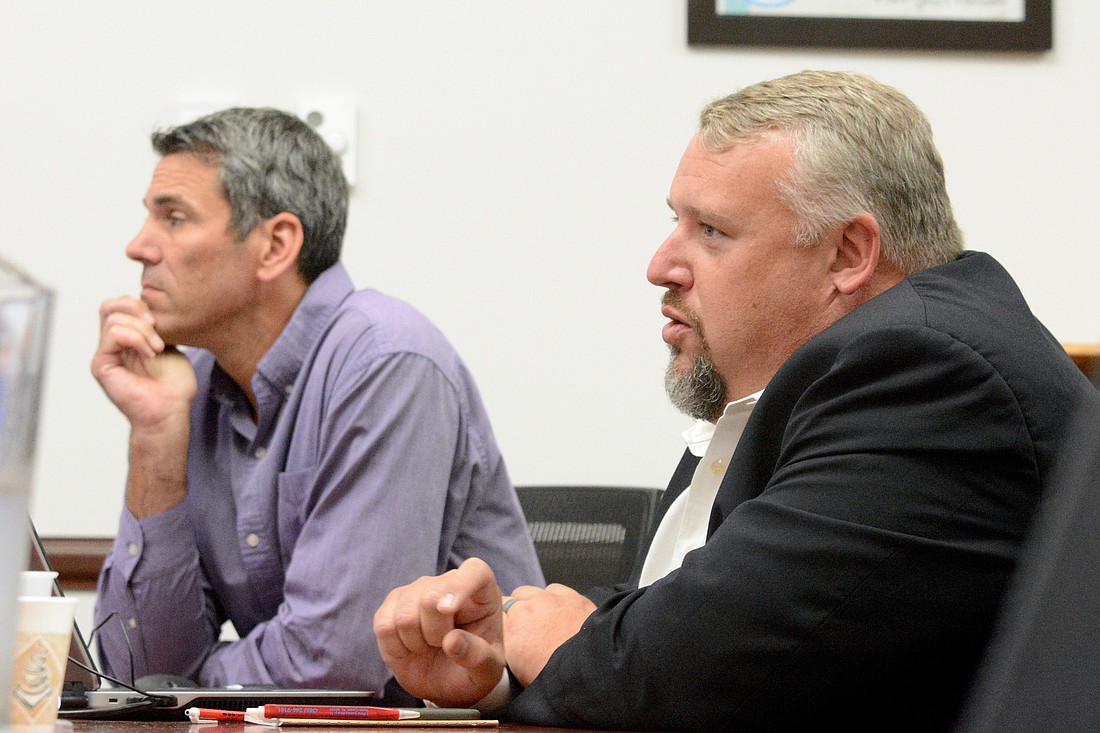- January 22, 2025
-
-
Loading

Loading

If street quality runs in a range from zero (failing) to 100 (perfect condition), Palm Coast's streets average a 79 — which is considered satisfactory — but that number will decrease if the city doesn't step up its maintenance program, according to a consultant hired by the city government to study city road quality.
From 1993 to 2002, the city averaged 18 miles of resurfacing per year. Then it passed a half-cent tax and increased to 50 miles per year from 2002 to 2011, resurfacing every city-jurisdiction road in the city. From 2012 forward, it dropped down to 10 miles per year.
Palm Coast contracted with Ohio-based company Transmap to measure road quality problems using lasers and other measuring devices mounted on a truck so that city officials can determine what needs fixing, and when.
Transmap President and CEO Howard Luxhoj presented Transmap's findings during a City Council workshop Aug. 28.
The city's 540 miles of city-jurisdiction roadway is worth about $842.4 million, he said, so money spent on repairs helps the city retain that value.
"When we’re talking about these big numbers, just keep in mind that when we find millions of dollars worth of distress, we have almost a billion dollars of value in it," he said. "You guys, with 540 miles ... that’s a lot of infrastructure that you have to keep track of and maintain. The good news is that you're doing a good job."
Still, he said, if the city doesn't increase its current rate of resurfacing, the state of the city's roads will deteriorate. Roads that are in such bad shape that they're near the bottom of the 0-100 pavement condition index, or PCI, scale tend to be the priciest to fix, so it makes sense to have a regular maintenance program to keep them from getting that bad, he said.
Palm Coast has varied widely over the years in terms of how often it resurfaces its roads. From 1993 to 2002, the city averaged 18 miles of resurfacing per year. Then it passed a half-cent tax and used that money to resurface 50 miles per year from 2002 to 2011, resurfacing every city-jurisdiction road in the city. From 2012 forward, it dropped down to 10 miles per year.
The city needs more than 10 miles but less than 50, and it needs to determine how much is needed, City Manger Jim Landon told the council.
"We do have some decisions to make, and we’re going to have to come up with a strategy, because 10 miles is not working," Mayor Milissa Holland said.
Palm Coast estimates it will have spent $1.6 million on street resurfacing and renewal by the end of the 2018 fiscal year and plans to spend $2.5 million in 2019. For following years, city staff suggested a potential "enhancement" level of funding that would bring the total resurfacing and renewal expenses to $3.1 million in 2020 and $3.4 million in 2021. The City Council will discuss the details in future meetings.